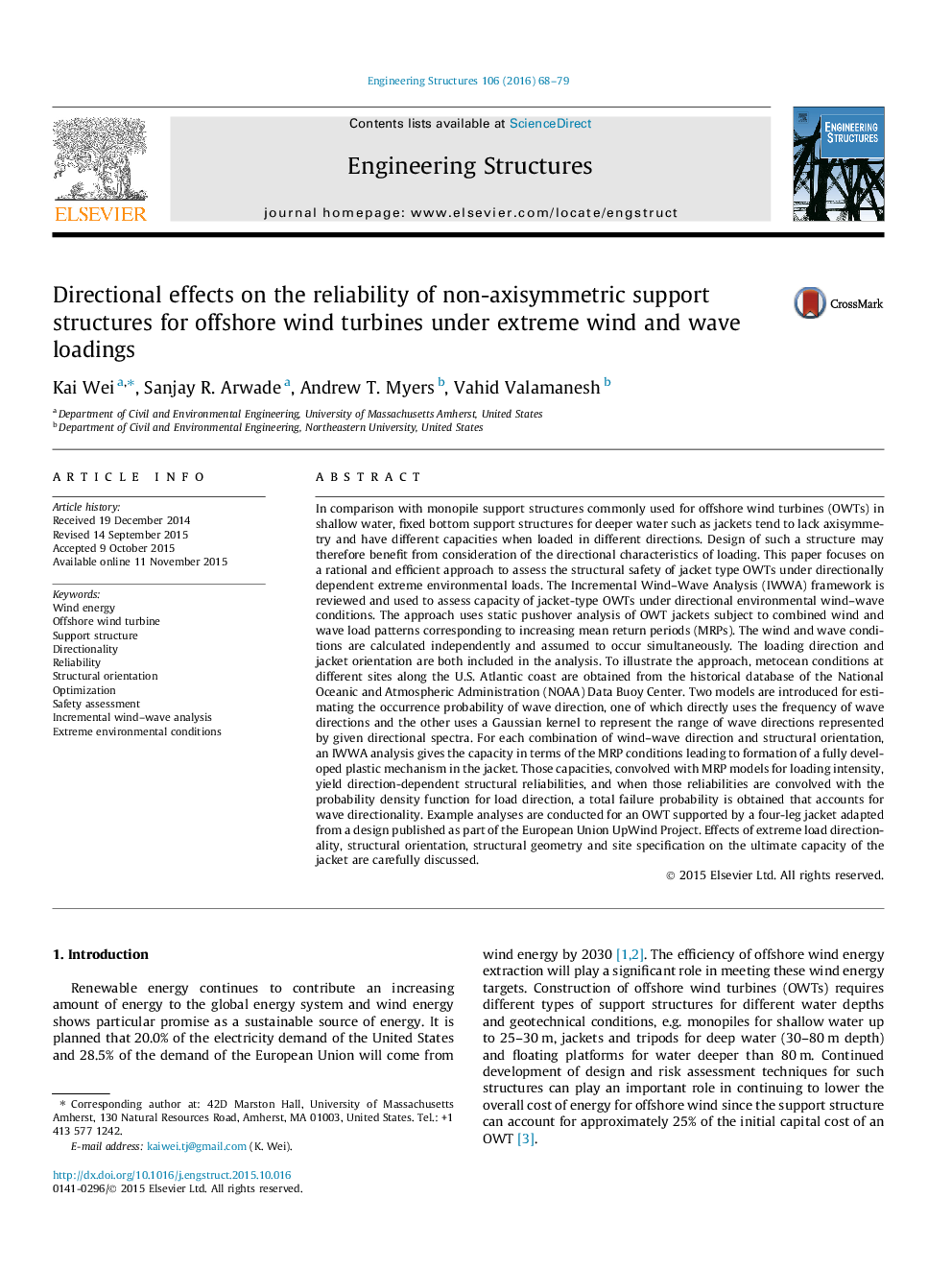| کد مقاله | کد نشریه | سال انتشار | مقاله انگلیسی | نسخه تمام متن |
|---|---|---|---|---|
| 265976 | 504338 | 2016 | 12 صفحه PDF | دانلود رایگان |
• An approach to assess the OWT jacket under directional extreme environmental loads.
• Two probability modeling approaches for dominant wave directions are provided.
• Example study under directional extreme conditions at US Atlantic coast is performed.
• Effects of load directionality, orientation and site specification are discussed.
In comparison with monopile support structures commonly used for offshore wind turbines (OWTs) in shallow water, fixed bottom support structures for deeper water such as jackets tend to lack axisymmetry and have different capacities when loaded in different directions. Design of such a structure may therefore benefit from consideration of the directional characteristics of loading. This paper focuses on a rational and efficient approach to assess the structural safety of jacket type OWTs under directionally dependent extreme environmental loads. The Incremental Wind–Wave Analysis (IWWA) framework is reviewed and used to assess capacity of jacket-type OWTs under directional environmental wind–wave conditions. The approach uses static pushover analysis of OWT jackets subject to combined wind and wave load patterns corresponding to increasing mean return periods (MRPs). The wind and wave conditions are calculated independently and assumed to occur simultaneously. The loading direction and jacket orientation are both included in the analysis. To illustrate the approach, metocean conditions at different sites along the U.S. Atlantic coast are obtained from the historical database of the National Oceanic and Atmospheric Administration (NOAA) Data Buoy Center. Two models are introduced for estimating the occurrence probability of wave direction, one of which directly uses the frequency of wave directions and the other uses a Gaussian kernel to represent the range of wave directions represented by given directional spectra. For each combination of wind–wave direction and structural orientation, an IWWA analysis gives the capacity in terms of the MRP conditions leading to formation of a fully developed plastic mechanism in the jacket. Those capacities, convolved with MRP models for loading intensity, yield direction-dependent structural reliabilities, and when those reliabilities are convolved with the probability density function for load direction, a total failure probability is obtained that accounts for wave directionality. Example analyses are conducted for an OWT supported by a four-leg jacket adapted from a design published as part of the European Union UpWind Project. Effects of extreme load directionality, structural orientation, structural geometry and site specification on the ultimate capacity of the jacket are carefully discussed.
Journal: Engineering Structures - Volume 106, 1 January 2016, Pages 68–79
